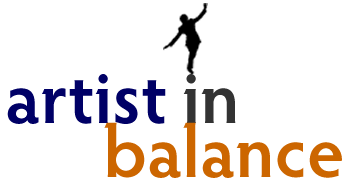Cleaning the House
To play an instrument or to sing requires very complex motor skills, run by a network of neurons in the brain. We generally start playing and singing all of a sudden to see how it all goes. This can cause some messiness or confusion in the brain, as different activities get mixed together and then we end up making more effort than we need to, with little overview of what we really need to do to play.
For instance, we might press our notes on the keys of the clarinet harder when the piece is forte, confusing it with the blowing of more air. Or we might stiffen our arms when singing high notes. All this extra effort does not make us better musicians.
Cleaning the house means that you sort the different tasks in your playing or singing technique, clarifying for yourself what is really needed to get the musical effect you are looking for. By removing one thing at a time, then putting it all back together, you become more aware of the other elements of your playing or singing. For instance, by making the movements of your instrument without sound, you can better notice the small physical sensations coming from your hands, lips, etc. You will become more aware of any habits that you might have that are getting in the way of an efficient and effective playing technique.
You will be surprised at what you find out about how you do things and how you can simplify and clarify what you need to do to play or sing.And, just like when we clean our house, you find valuable things that you did not know you had!
Here are some examples of this technique for different instrument groups or voice:
Winds: Blowing through a thin straw while thinking of the phrase, or fingering without blowing for the same phrase. You can also try blowing through a straw and fingering on your instrument at the same time.
Student flutist reaction: “I found out that I was blowing way too hard, and my fingering was stiffening. Now I can play with much less effort.”
Strings: Fingering without bowing, bowing without fingering. You can also turn the bow upside down, and bow in the crook of your elbow, while fingering on the fingerboard above. Even using broomstick and dowel to bow and finger without your instrument.
Singers: Shaping the words without sound. Shaping the words, letting a monotone sound escape without trying to speak or sing. Then “speaking” the words on the notes. You can also sing the phrase without words, of course!
Keyboard: Close the cover of the keyboard and play the notes without sound. Then open and play with sound.
Guitar: Play the phrase with the left hand only, then try to use the plectrum or fingers to select the right strings, without fingering. Rest the hand you are not using on your leg, or support the instrument by holding it at a different point than you usually do: for instance when fingering, hold the instrument on the outside of the curve right. Using a strap, we found out that it improved freedom in playing if guitarists raised one hand in the air and moved the arm around slowly while playing with the other hand. This teaches your brain that you do not need to stiffen your arms and back to play.
Drums: Using a drum pad is already like cleaning the house, because the usual sound interaction drum to ear is not there. Still, you can muffel the pad using a cloth, which interferes with the usual feedback loop. We found that covering the ears (maybe using headphones) cleaned up the movements nicely. Once you start playing with more ease, you may find that you are suddenly making too much sound when you go back to playing on the instrument. This is because with more freedom of movement alot of energy is suddenly released. So, after cleaning your technical house, you may need to back of and play with more subtly and less effort.
We also thought about changing the usual feedback loop by altering the positioning of the drum set parts. Putting things in different places than you are used to, like further away, or switching sides, forcing your brain to think more spacially. This will improve your accuracy when you put things back to a normal position. Or you may find that you get a different opinion about where to put things when you can navigate more freely.
This tactic was developed in response to information from Dr. Ben van Cranenburgh, motor neurologist, Stichting ITON.
